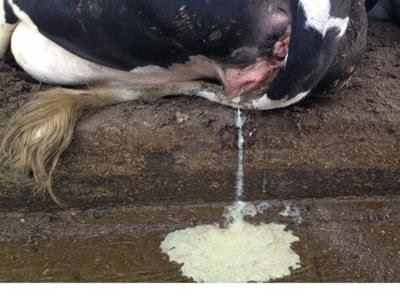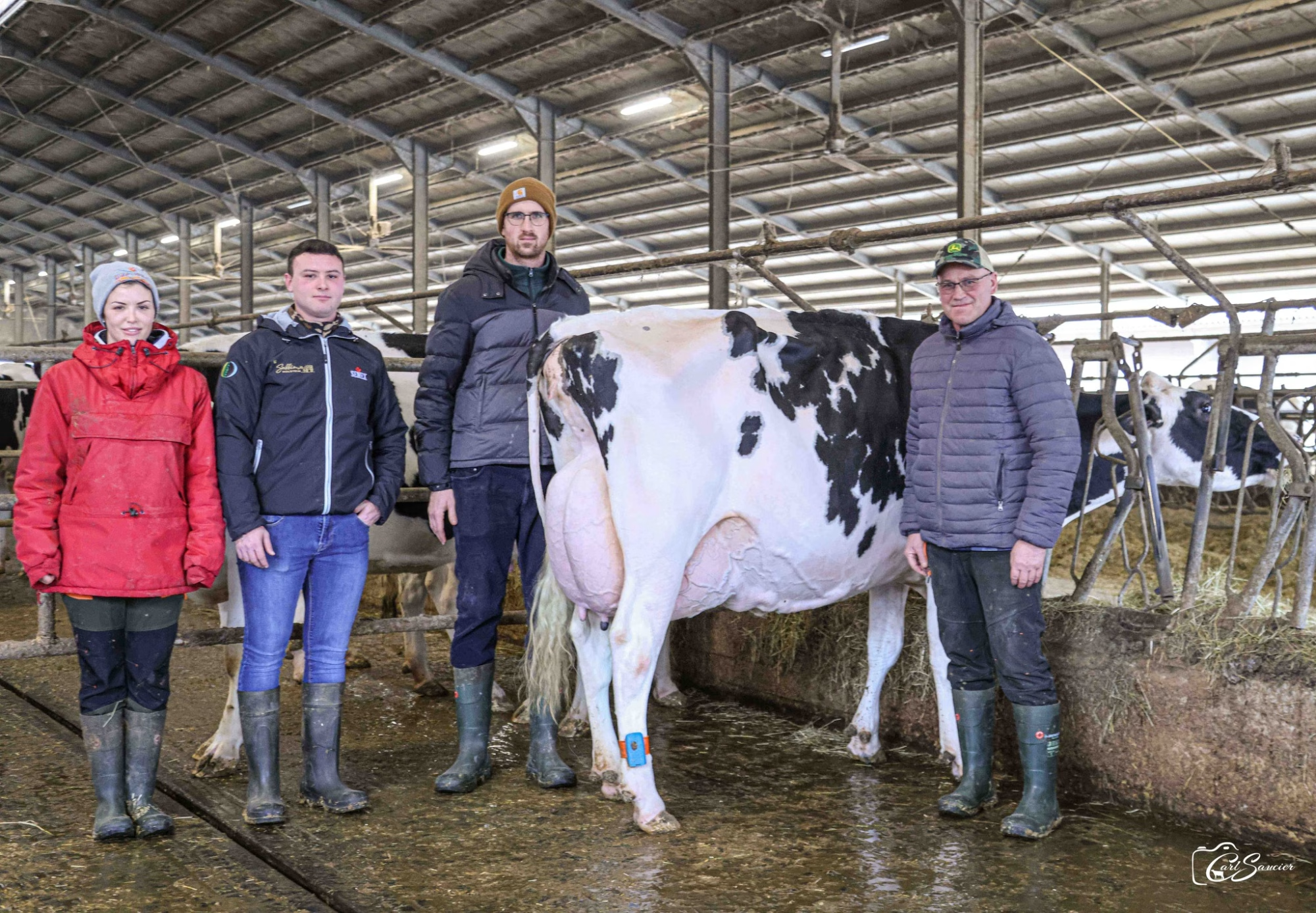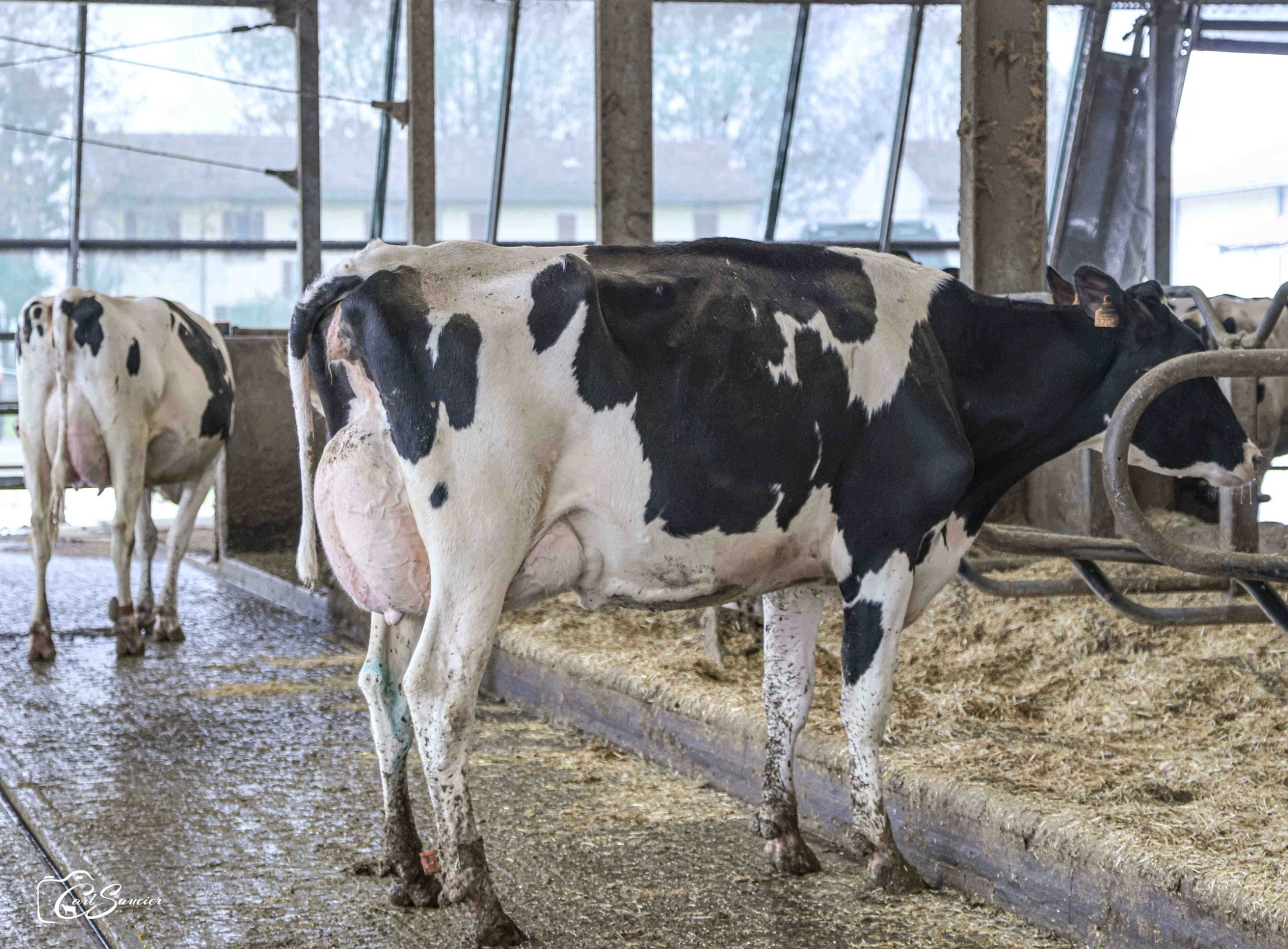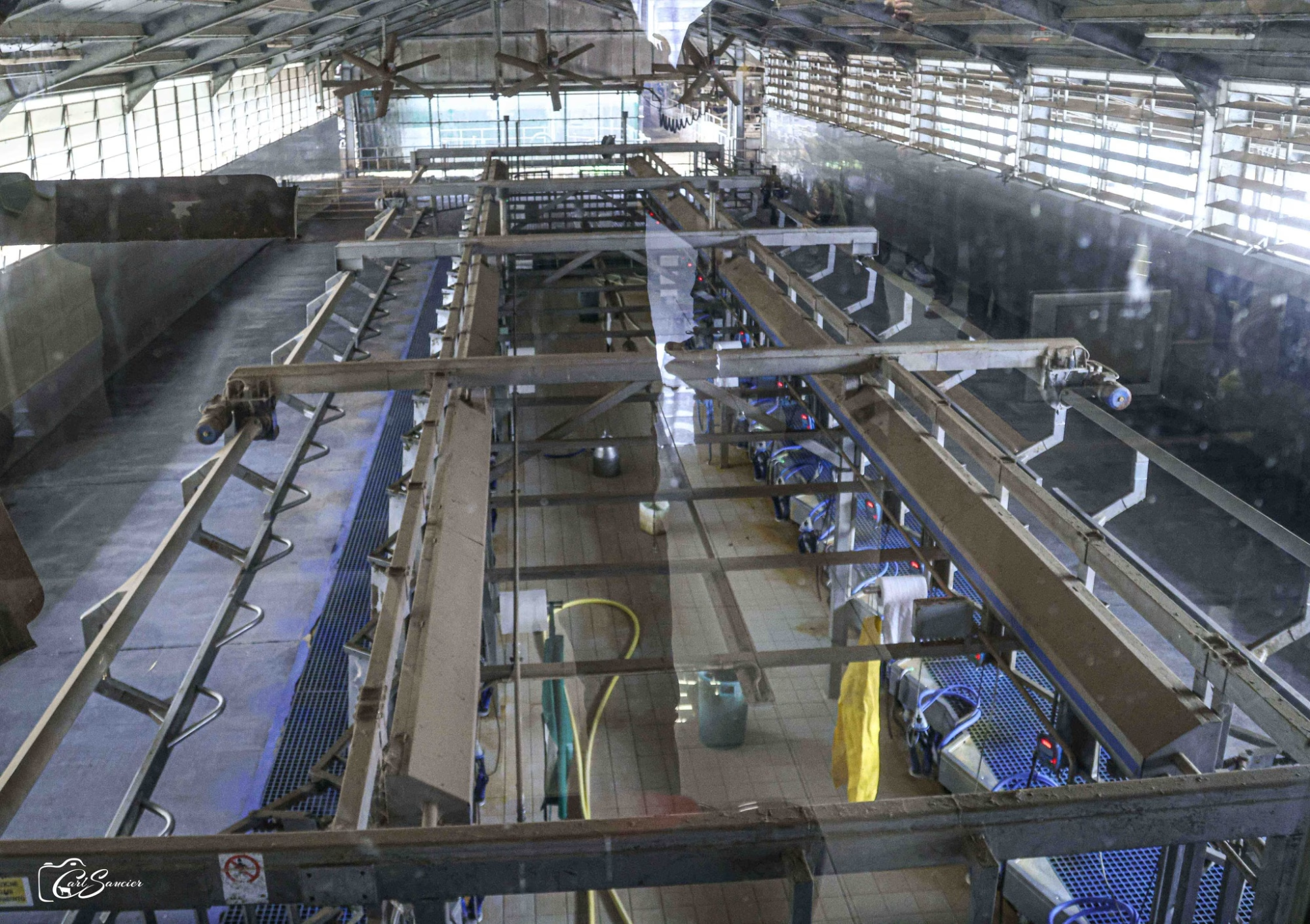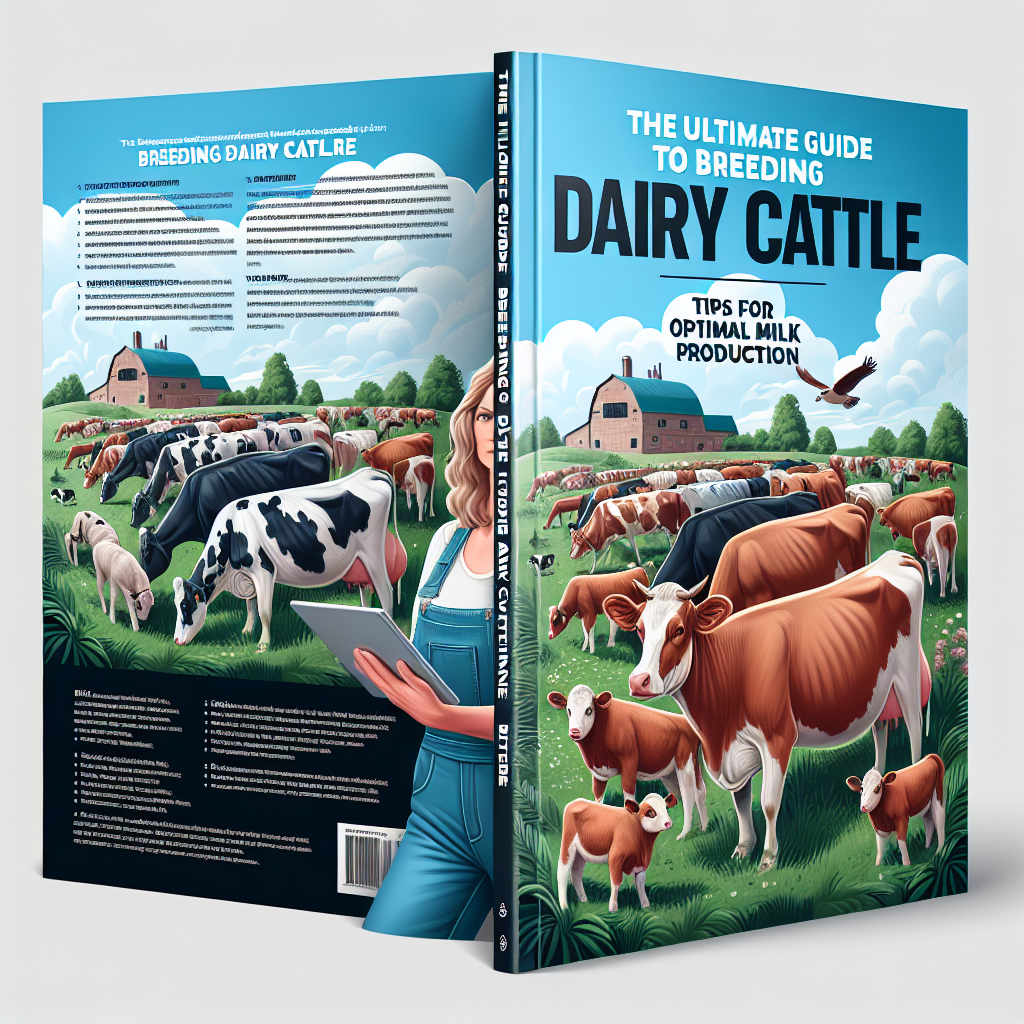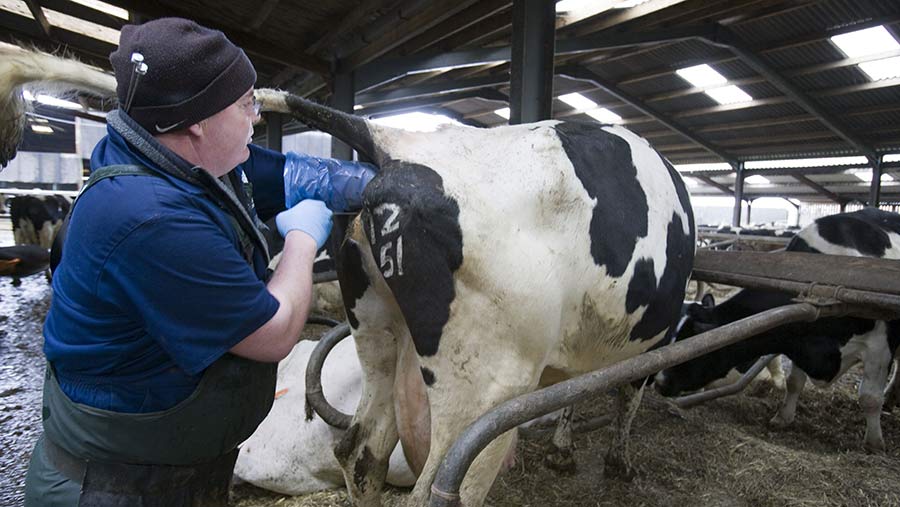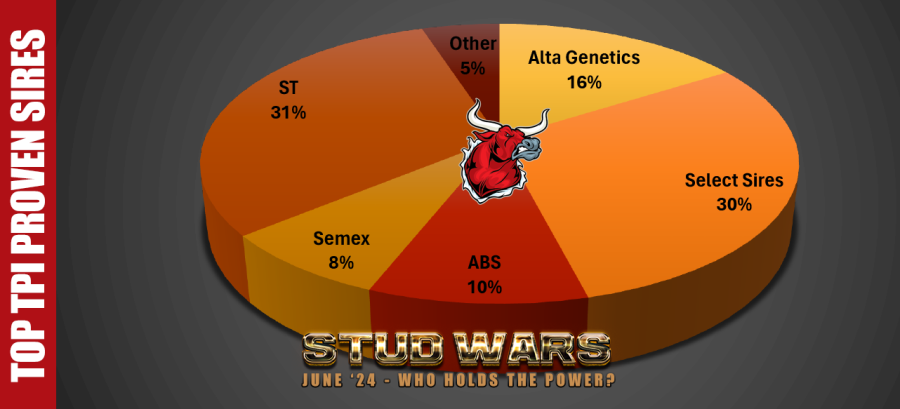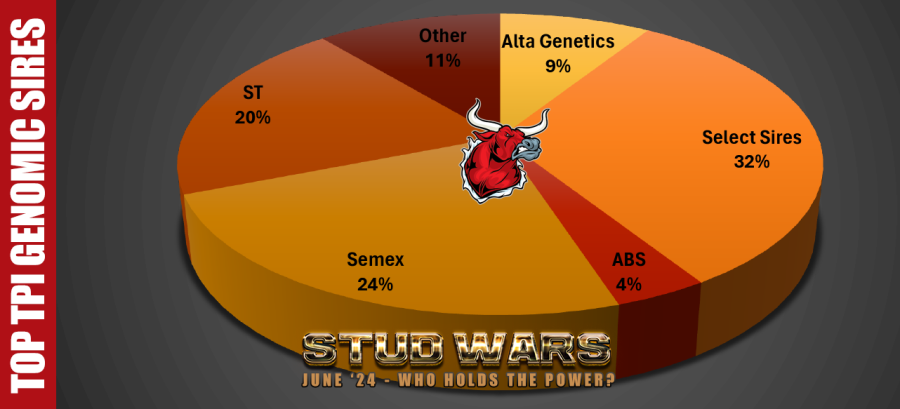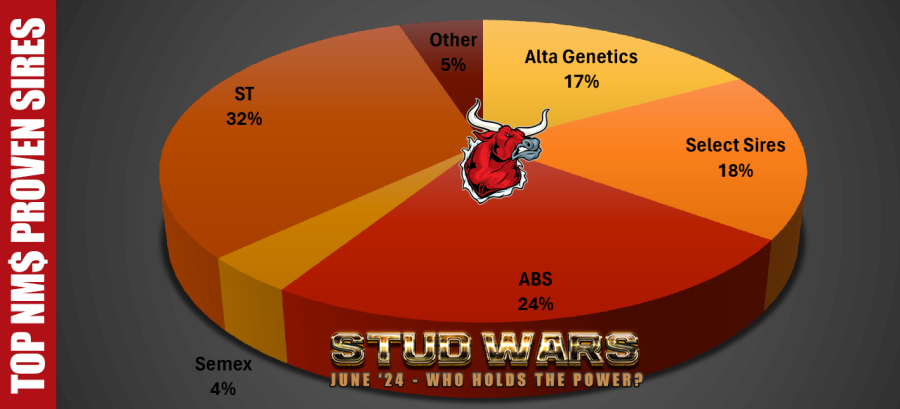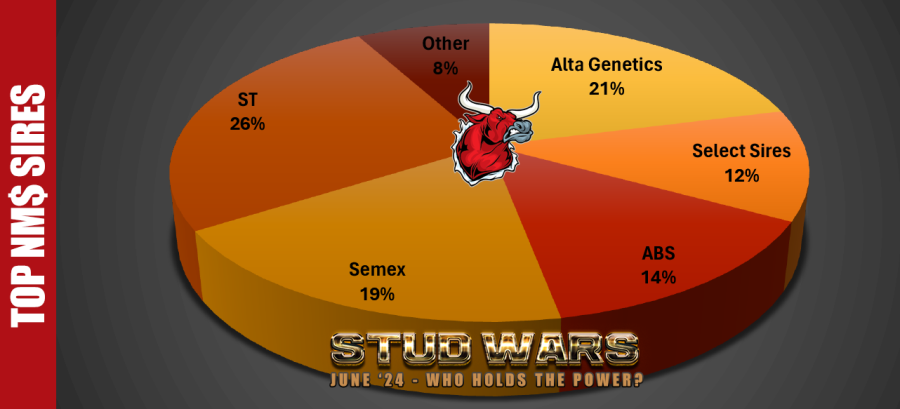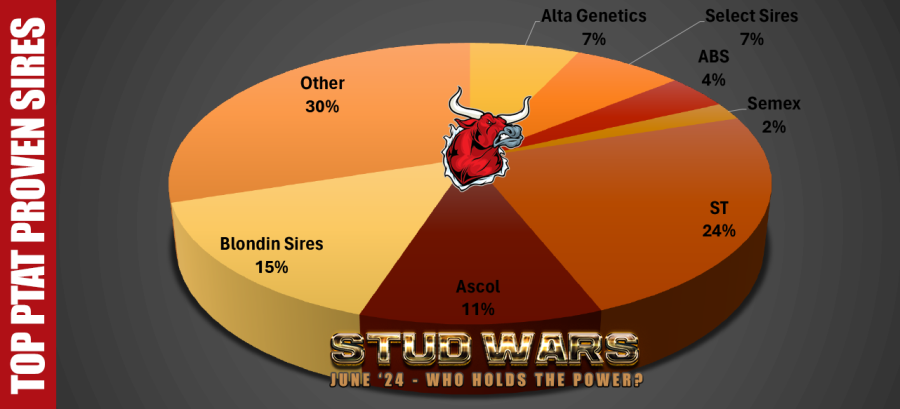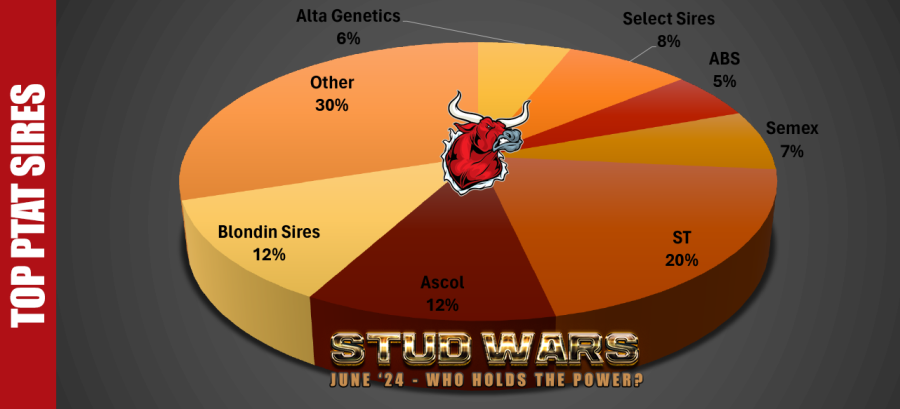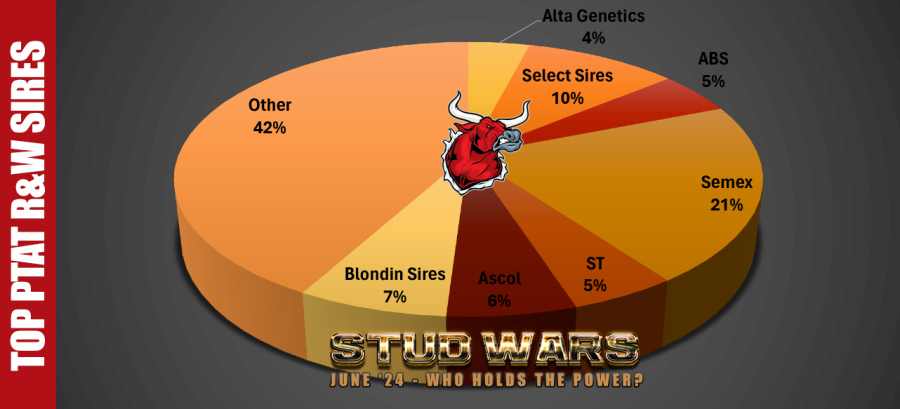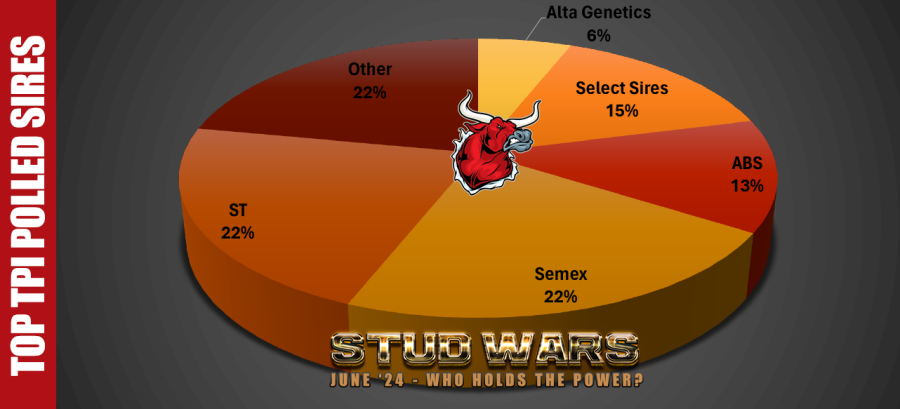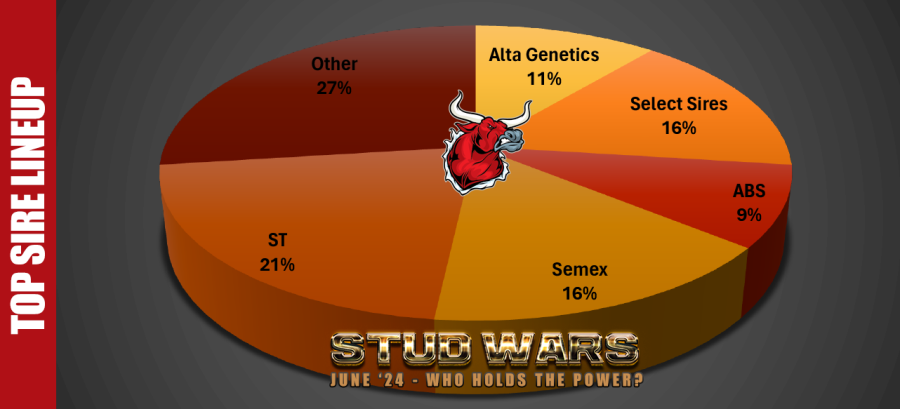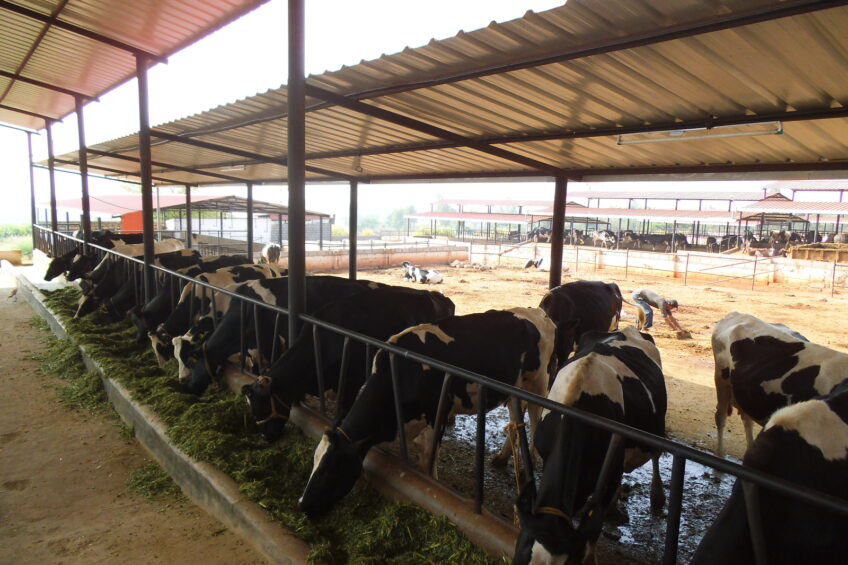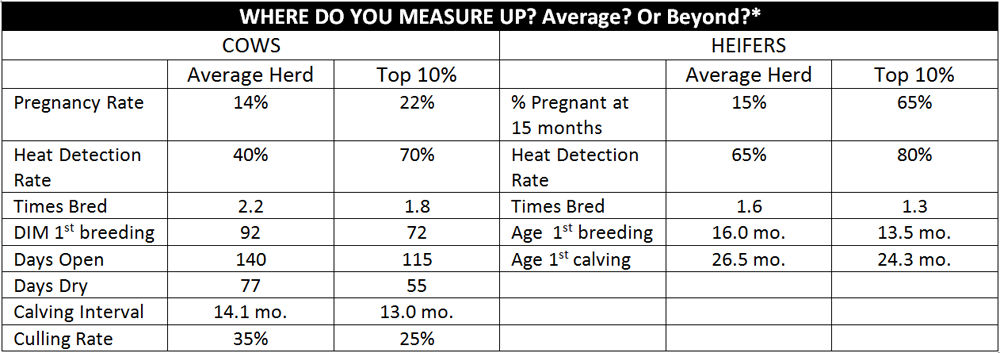Maximize dairy cow fertility through genetic selection. Explore current strategies and future directions. How can we ensure consistent performance across different systems?
Fertility is the cornerstone of herd productivity and economic profitability. Fertile cows, which conceive sooner after calving and need fewer inseminations, produce more milk and have reduced operating expenses. The primary goal of genetic selection for fertility is to minimize ‘days open’ or the time between calving and conception. This metric is a crucial indicator of reproductive efficiency and herd health. It includes various reproductive processes such as uterine involution and fertilization. Concentrating on heritable qualities that increase fertility can create a strong herd capable of surviving reproductive problems. Join us as we investigate the present state and future directions of genetic selection for fertility in dairy cows, looking at different reproductive management techniques, the underlying genetics, and why they are critical for consistent performance across farming systems.
The Current State of Dairy Cow Fertility: A Reflection of Selective Breeding and Diverse Management Practices
Dairy cow fertility has improved over time via selective breeding and management approaches. Days open—the interval between calving and successful conception—is critical. It reflects how rapidly cows recover to fertility after calving.
| Year | Average Days Open | Improvement from Previous Year |
|---|---|---|
| 2015 | 120 | N/A |
| 2016 | 118 | -2 |
| 2017 | 115 | -3 |
| 2018 | 113 | -2 |
| 2019 | 110 | -3 |
| 2020 | 108 | -2 |
| 2021 | 105 | -3 |
| 2022 | 103 | -2 |
| 2023 | 100 | -3 |
Different dairy systems use various reproduction mechanisms. Less intensive methods depend on spontaneous estrus detection and minimum hormonal intervention. Days open are a solid predictor of fertility in this context since they include various reproductive processes such as uterine involution and fertilization.
In more advanced systems, hormonal therapies like PGF2α and GnRH may synchronize estrus for scheduled artificial insemination (AI). These strategies may boost pregnancy rates, but they may overshadow the value of specific fertility components. Nonetheless, days open remain a vital statistic.
Historically, genetic selection has been a powerful tool in our efforts to reduce open days and improve reproductive efficiency. By understanding and choosing specific fertility components, we can ensure high fertility in future cows, regardless of our management techniques. This knowledge empowers us to take control of our herd’s fertility.
Genetic selection and management practices influence the fertility landscape. As we get a better knowledge of fertility genetics, we can enhance reproductive efficiency across several systems, resulting in consistent and dependable fertility results.
The Biological Odyssey to a Successful Pregnancy in Dairy Cows
The path to a successful pregnancy in dairy cows comprises a series of sophisticated biochemical processes, each potentially heritable and contributing to total fertility. Let’s explore these critical phases, beginning with uterine involution.
- Uterine Involution: Following delivery, the cow’s uterus must return to its pre-pregnancy size and condition, a process known as uterine involution. This stage establishes the foundation for future reproductive activities. Quicker involution, governed by genetics, results in a shorter period between calving and the subsequent successful pregnancy.
- Estrous Cycle Re-establishment: The cow’s estrous cycle must continue after uterine involution. This process includes hormone control in preparation for pregnancy. The time and regularity of these cycles influence when a cow is ready for insemination again, with genetics having a role.
- Estrus Expression and Detection: Estrus (known as “heat”) must be visible and identifiable for successful insemination. Although management influences the severity and detectability of estrus activities, genetics also plays a role. Cows that exhibit more obvious estrus behaviors are inseminated at the best moment, increasing fertility rates.
- Ovulation: Ovulation, the release of an egg from the ovary, occurs after estrus detection. The timing of ovulation and insemination is critical for conception. Genetic differences may influence the time of ovulation and, hence, fertility.
- Fertilization and Corpus Luteum Formation: After ovulation, the egg must encounter sperm to fertilize. Following fertilization, the corpus luteum develops and produces progesterone to sustain pregnancy. The efficiency of fertilization and progesterone production is genetically determined.
- Support of Early Cleavage and Pregnancy Establishment: The oviduct promotes early embryo growth, whereas the uterus provides an optimal environment for implantation. Hereditary factors heavily influence early pregnancy stages.
Understanding the genetic basis of dairy cows’ reproductive features is essential and critical. This understanding is vital to improving fertility in a variety of dairy systems. Recognizing genetic underpinnings helps dairy farmers and researchers aim for selective breeding, resulting in more efficient and sustainable farming operations. This emphasizes the urgency and significance of the subject.
Enhancing Reproductive Performance through Genetic Insights
Understanding the genetic basis of fertility features in dairy cows is critical for improving their reproductive success. Heritability, which measures the proportion of attributes handed down genetically, demonstrates how well humans can choose these traits. Important reproductive factors such as uterine involution, estrous cycle regularity, estrus expression, sperm capacitation, and ovulation have varying heritability levels.
| Fertility Trait | Heritability |
|---|---|
| Uterine Involution | 0.10 |
| Estrous Cycle Regularity | 0.15 |
| Estrus Expression | 0.20 |
| Sperm Capacitation | 0.12 |
| Ovulation | 0.18 |
According to research, certain qualities, such as estrus expression and cycle regularity, have moderate to high heredity. Still, others, such as successful fertilization and early embryo development, have lower heritability. This variance emphasizes fertility as a complicated and multidimensional feature. For example, the characteristic days open, representing the time between calving and successful pregnancy, encompasses these separate occurrences, demanding genetic and phenotypic techniques for proper selection.
Dairy farming has developed to prioritize these heritable features via modern genetic testing and genomic technology. Currently, genomic selection is used in breeding programs to estimate the genetic potential of young animals based on DNA markers related to fertility. This method accelerates the genetic increase in fertility.
These methods have resulted in better fertility rates over time. Using genetic data to predict heredity may improve breeding choices, reduce open days, and increase conception rates. However, knowing how genetic factors interact with environmental and management variables is necessary due to the diversity of reproductive management approaches throughout dairy systems.
Effective genetic techniques use balanced selection indices, including productivity and fertility features. This balance ensures that reproductive advances do not compromise other essential qualities. However, it’s important to remember that continuous research and monitoring are crucial for improving these techniques and maintaining high fertility in dairy cows. This ongoing commitment keeps us engaged in improving our herd’s fertility.
Adapting Genetic Selection to Different Reproductive Management Systems
Understanding the influence of various reproductive management strategies on dairy cow fertility allows for more informed genetic selection choices. In minimum intervention systems, cows are inseminated once estrus is recognized, depending on natural estrus expression and detection. Estrous cycle regularity and sperm viability are essential characteristics in this context.
In contrast, intensive systems employ hormonal therapies (e.g., PGF2α and GnRH) for scheduled artificial insemination. These technologies decrease uncertainty in estrus detection and insemination timing while emphasizing the relevance of the cow’s hormonal response and sperm survival in a controlled environment.
Crucial Genetic Traits for Optimizing Fertility in Dairy Cows
Breeders should prioritize many essential genetic assessment features when selecting enhanced fertility in dairy cows. These characteristics aid in identifying cows with improved reproductive performance, boosting the herd’s overall efficiency and output. The most significant traits include:
-
- Days Open: The number of days from calving to the cow being successfully pregnant. Shorter days open indicate better fertility.
- Conception Rate: This metric represents the proportion of inseminations that result in a successful pregnancy. Higher conception rates indicate higher fertility.
- Calving Interval: This is the period between two consecutive calvings. A shorter interval often indicates improved reproductive effectiveness.
- Estrous Cyclicity: A cow’s capacity to resume regular estrous cycles after giving birth, suggesting reproductive health and readiness to rebreed.
- Heifer Pregnancy Rate: The possibility of a cow being pregnant at a certain age. This is critical for determining the future reproductive capacity of young calves.
| Trait | Estimated Heritability (%) |
|---|---|
| Days Open | 5-10% |
| Conception Rate | 3-9% |
| Calving Interval | 5-10% |
| Estrous Cyclicity | 20-30% |
| Heifer Pregnancy Rate | 15-20% |
Balancing Natural Fertility and Hormonal Management: Lessons from the Global Dairy Industry
Minimal intervention methods concentrate on natural reproductive characteristics, while intensive systems prioritize hormone responsiveness and uterine receptivity. Understanding the genetics of these features allows cows to function successfully under various management techniques.
New Zealand is an excellent example of effective genetic selection for fertility. Dairy producers have established a breeding program to improve qualities such as calving interval, days to first heat, and conception rate. This program, led by the Livestock Improvement Corporation (LIC), employs modern genetic methods to select bulls whose daughters have greater fertility. Over time, this concentration has dramatically increased herd reproductive efficiency.
Scandinavian dairy industries, notably in Sweden and Norway, provide another example. Their Total Merit Index (TMI) evaluates health and fertility features, resulting in increased milk production and better reproductive performance. Genomic selection has improved their capacity to find fertility-enhancing genes.
How can dairy farmers apply effective tactics for their herds? Here are some practical steps:
- Genomic Testing: Use genetic studies to identify cows and bulls with exceptional reproductive features. This enables educated breeding decisions.
- Record Keeping: Meticulous records of calving intervals, days to first heat, and conception rates. This information is critical for choosing animals to breed.
- Consultation: Collaborate with a geneticist or breeding expert to create a customized breeding strategy. Experts may provide insights tailored to your herd’s requirements.
- Emphasize Health: Maintain proper health habits. There is a substantial relationship between fertility and general health. Ensure enough diet, shelter, and veterinary care.
- Adopt Technology: Use estrus detection technologies and timed AI procedures to increase breeding efficiency and shorten calving intervals.
Adopting these genetic selection tactics may increase your herd’s fertility, resulting in higher production and profitability.
The Bottom Line
Finally, dairy cow fertility is determined by a combination of genetic factors and reproductive activities. A cow’s rapid return to pregnancy after calving is critical for dairy farm output. Genetic selection aims to reduce the number of days open, but various management approaches provide variable fertility results. Understanding the genetics of fertility events, as well as adopting sophisticated reproductive technology, may help us increase fertility rates. Future advances in genetic selection and reproductive control will contribute to constant fertility in dairy cows, assisting the global dairy sector.
Key Takeaways:
- Genetic selection for fertility is critical in enhancing dairy cow reproductive efficiency.
- Successful pregnancy soon after calving involves heritable factors such as uterus involution and ovulation.
- Dairy systems use either natural estrus detection or hormonal treatments and timed AI for managing reproduction.
- The primary goal is to reduce ‘days open’ to improve herd health and productivity.
- Understanding the genetic basis of fertility is essential for consistent performance across diverse management systems.
- Enhanced reproductive efficiency leads to greater overall productivity and profitability in dairy herds.
Summary:
Dairy cow fertility, a focal point for genetic selection within the dairy industry, hinges on establishing pregnancy soon after calving. This complex process involves heritable factors like uterus involution, estrous cycles, and ovulation. Different dairy systems employ varying reproductive management practices, from natural estrus detection to hormonal treatments and timed artificial insemination (AI). Through targeted genetic selection, the goal is to minimize ‘days open’ (time between calving and conception), thereby boosting reproductive efficiency and herd health. As the industry evolves, understanding the genetic basis of fertility components is crucial to ensuring cows perform well across diverse management setups, enhancing overall productivity and profitability in dairy herds.
Learn more:
- Maximizing Dairy Cow Fertility Through Genetic Selection: Current Strategies and Future Directions
- Top Tips for Achieving Your Ideal Dairy Herd Through Enhanced Genetic Selection Strategies
- Genomic Selection: Doubling of the Rate of Genetic Gain in the US Dairy Industry
 Join the Revolution!
Join the Revolution!
Bullvine Daily is your essential e-zine for staying ahead in the dairy industry. With over 30,000 subscribers, we bring you the week’s top news, helping you manage tasks efficiently. Stay informed about milk production, tech adoption, and more, so you can concentrate on your dairy operations.








